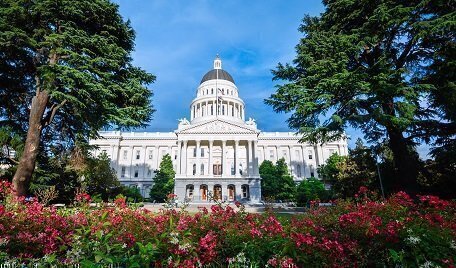There is now a movement afoot by a group seeking a ballot referendum in California for that state to become its own sovereign nation. It’s not actually a new idea, but it is one that faces extremely long odds.

We covered this same topic last May when the idea of an independent Texas came up as a possible plank on that state’s Republican Party platform. In the cases of Texas and California, the states could hold referendums, but a new federal constitutional amendment might be the only possible way a California or Texas “Brexit” could happen.
The debate over whether states can secede from the United States was officially put to an end by the Civil War. During his first Inaugural Address, President Abraham Lincoln declared that “no state, upon its own mere notion, can lawfully get out of the Union…in view of the Constitution and the laws, the Union is unbroken”.
After the war, the Supreme Court endorsed Lincoln’s view on the constitutionality of secession. In 1868, Texas was a party to a case before the Court, Texas v. White, where the Court ruled that “when Texas became one of the United States, she entered into an indissoluble relation.” The Court put to rest any 10th amendment claims that states retain the right to leave the Union as they please, as Chief Justice Salmon Chase wrote that the Constitution, “in all its provisions, looks to an indestructible Union.”
Despite this, pro-secession activists point in Texas have pointed to the Texas state constitution as a legal justification for secession, denying the legitimacy of the 1868 Supreme Court ruling, and drawing inspiration from the Declaration of Independence.
Back in 2012, the National Constitution Center’s constitutional literacy adviser Lyle Denniston wrote for us about the Texas secession debate, and the possibility that a state could leave the United States if it had permission from the other 49 states.
Dennistion said Texas v. White made voluntary secession with permission impractical without a constitutional amendment granting the government the power to let Texas go.
“In order to overrule Texas v. White by constitutional amendment, a secession proposal would have to modify the very Preamble of the Constitution, in which the nation’s people created ‘a more perfect Union,’ and would have to wipe out the guarantee in Article IV of a 'republican form of government' in each state,” he said.
In the recent California secession movement, the Los Angeles Times says the Yes California group has received permission from the state to start collecting the nearly 600,000 signatures it needs over the next six months to get the question on the 2019 state ballot.
The Times says the petition would repeal provisions in the California Constitution that the state is an "inseparable part of the United States" and that the U.S. Constitution is the "supreme law of the land.”
That would constitute a direct challenge to the federal Constitution’s Supremacy Clause, which in part reads that “This Constitution, and the Laws of the United States which shall be made in Pursuance thereof; and all Treaties made, or which shall be made, under the Authority of the United States, shall be the supreme Law of the Land.”
Despite the long odds faced by the Yes California movement, secession as a public topic may stick around for a while. A recent Reuters/IPSOS poll found 32 percent of Californians supporting the idea of secession. The poll was taken right after the recent presidential election.







